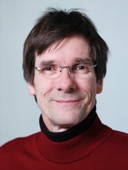UPDATE - Prof. Thiele Invited Speaker at DATE
Slides are now available - Prof. Thiele will give a talk in two weeks (29.03), on the future of Design for IoT at the 2017 DATE Conference

Download Presentation slides (PDF, 9.3 MB)
Abstract
If visions and forecasts of industry come true then we will be soon surrounded by billions of interconnected embedded devices. We will interact with them in a cyber-human symbiosis, they will not only observe us but also our environment, and they will be part of many visible and ubiquitous objects around us. We have the legitimate expectation that the individual devices as well as the overall system behaves in a reliable and predictable manner. This is an indispensable requirement as it is infeasible to constantly maintain such a large set of devices. In addition, there are many application domains where we rely on a correct and fault-free system behavior. We expect trustworthy results from sensing, computation, communication and actuation due to economic importance or even catastrophic consequences if the overall system is not working correctly, e.g., in industrial automation, distributed control of energy systems, surveillance, medical applications, or early warning scenarios in the context of building safety or environmental catastrophes. Finally, trustworthiness and reliability are mandatory for the societal acceptance of human-cyber interaction and cooperation. It will be argued that we need novel architectural concepts, an associated design process and validations strategies to satisfy the strongly conflicting requirements and associated design challenges of platforms for CPS: Handle at the same time limited available resources, adaptive run-time behavior, and predictability. These challenges concern all components of an IoT system, e.g., computation, storage, wireless communication, energy management, harvesting, sensing and sensor interfaces, and actuation. The talk will be driven by examples from various application domains such as smart watches, zero-power systems, environmental sensing, and air pollution sensing.